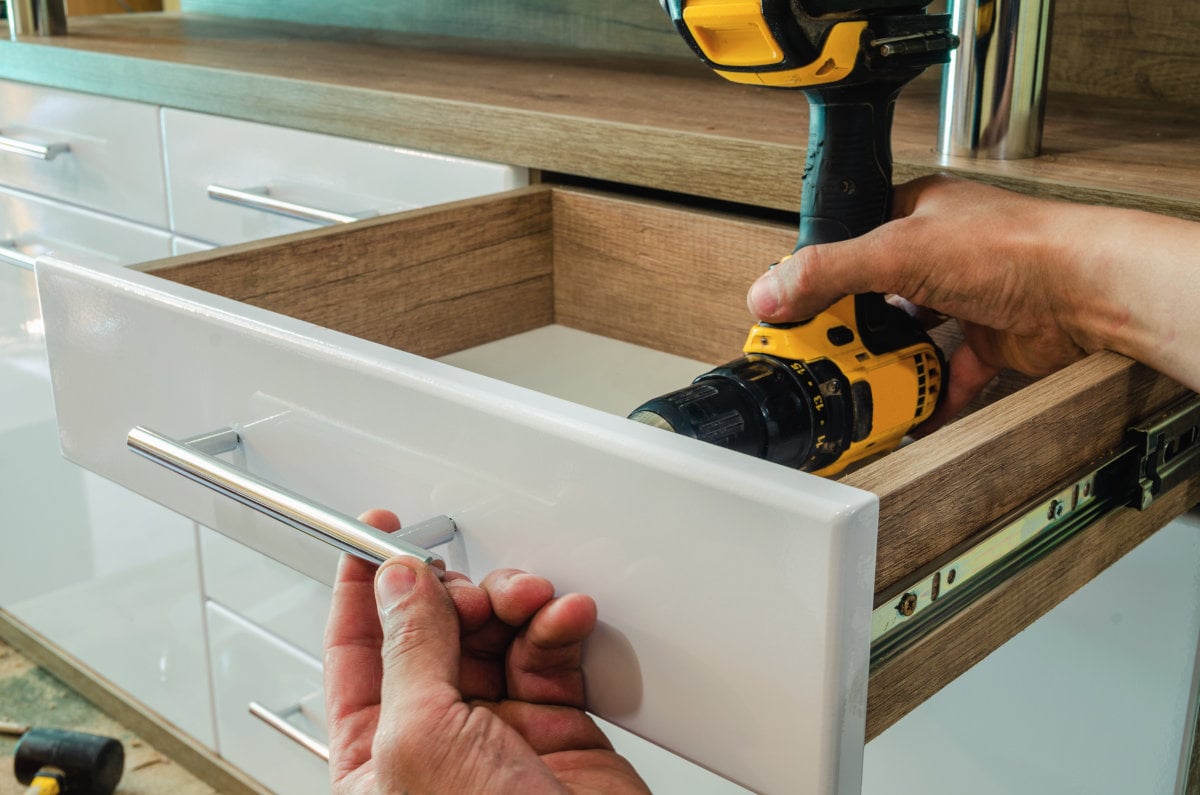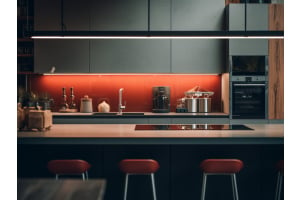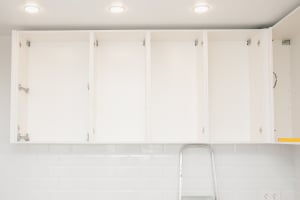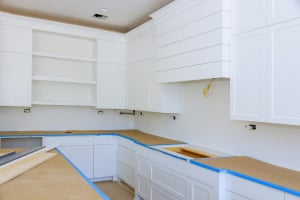
When your kitchen pantry cabinets start to look tired or outdated, a complete remodel is not always necessary. Instead of replacing every cabinet, many homeowners turn to cabinet resurfacing, refacing, or refinishing as cost-effective alternatives that deliver a fresh, modern look at a fraction of the price. The average cabinet resurfacing cost or cabinet refacing cost depends on the size of your kitchen, the materials you choose, and whether you hire a professional or take the DIY route. Even small upgrades, such as swapping out old knobs or handles for kitchen cabinets or applying a new veneer, can dramatically transform the style of your space without the expense of all-new cabinetry.
Resurfacing involves updating the exterior with a new laminate, veneer, or finish, while refacing often means replacing the cabinet doors and drawer fronts but keeping the existing cabinet boxes. Refinishing, on the other hand, typically includes sanding and repainting or staining your cabinets to restore their appearance. Each option comes with its own price range, benefits, and limitations, which makes it important to understand the difference before starting your project. In this guide, we’ll break down the cabinet resurfacing cost, compare it with refacing and refinishing, and share expert advice to help you choose the right balance between savings, style, and durability for your kitchen.
What Is Kitchen Cabinet Resurfacing?
There are two main ways to achieve a completely new aesthetic and style without removing all your existing kitchen cabinets and purchasing new storage units:
- Refacing means you purchase new cabinet doors and fronts for the drawers within your kitchen and add a new veneer or other treatment to the visible face frames on your cabinets.
- Resurfacing involves treating the existing doors and drawer fronts, usually by fitting a new veneer or laminate or adding another treatment to the outer aspects of your kitchen units.
Either option can inject a fresh, modern look into your kitchen or lift outdated cabinetry, alongside decorating above kitchen cabinets and perhaps adding a lick of paint to the walls.
Our high-quality, premium real-wood veneers are designed to last for years, so resurfacing solid cabinetry can extend the lifespan of your kitchen storage even further. However, more brittle cabinets with doors made from MDF or other materials may not be suited to resurfacing, depending on when the kitchen was originally installed.
Advantages of Cabinet Resurfacing
The primary benefit to resurfacing cabinets is that the cost is a fraction of what you would pay were you to invest in new cabinetry throughout. Your budget will include the cost of the veneer or laminate you select and the expense of hiring a professional tradesperson to complete the resurfacing if you do not wish to undertake the project yourself.
Other advantages include:
- Completing a kitchen remodel within two or three days
- Being able to continue using your kitchen during the resurfacing work
- Picking colors, styles, and shades of your choosing
- Avoiding adding to landfill by disposing of good condition cabinets
- Retaining the original box units and kickboards
- Covering any scratches or dents to your existing veneer or laminate
Resurfacing kitchen cabinets creates very little mess, although most cabinetry professionals recommend removing doors and drawer fronts as this minimizes disruption and means the resurfacing work can be completed in another area or a workshop. In some situations, resurfacing may not be advisable, and we might recommend refacing and purchasing new doors instead–this scenario applies where the kitchen design needs to change or if the doors are not of sufficient quality.
Costs vary depending on the resurfacing materials you select but range considerably from beautiful veneers and stainless-steel hardware and handles to wood paints. If you choose to use paint or varnish, we’d suggest buying paint specifically designed for kitchen environments as some paints may crack over time due to heat and humidity.
Different Ways to Resurface Your Kitchen Cabinets
There are numerous cabinet finishes, colors, grains, textures, and patterns to choose from, so the starting point is to think about the aesthetic you'd like your kitchen to have and the shades that will work well with the rest of your décor. Real wood veneers are one of the most popular options, with wood such as maple, cherry, and oak providing a durable, classic finish, which can be stained in any shade to make the natural wood feel brighter or darker.
Note that veneers should be properly moisture-sealed to ensure the finished cabinets are durable enough for use in a kitchen. Older units can also be revamped with new hardware, such as hinges, handles, pulls, and knobs, with an equally broad array of choices available.
It is normally advisable to work with a capable professional with experience applying replacement veneers to kitchen cabinets to ensure you achieve the appearance you wish–but if you are happy with the layout of your kitchen and your cabinet boxes remain in good condition, resurfacing is a cost-effective and quick way to transform the look of your cooking and dining spaces.













